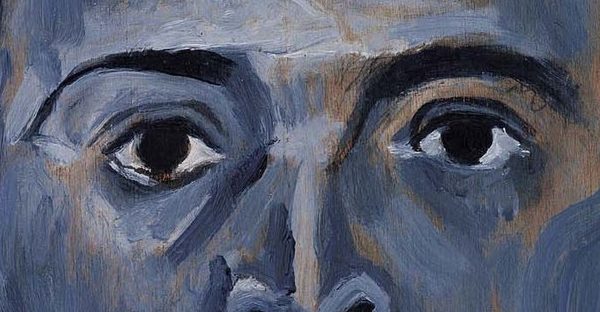
At Public Books, Lindsay Gail Gibson reviews two recent books that toy with the conventions of the novel to investigate feminist subjectivity: Blue Self-Portrait by Noémi Lefebvre (translated from the French by Sophie Lewis), and The Correspondence Artist by Barbara Browning. As Gibson notes, “Their protagonists claim sovereign rights over differently virtuosic stylistic demesnes, slipping the strictures that contort women’s behavior and, in turn, circumscribe their authorship.” Here’s an excerpt from the review:
A 1910 self-portrait by Arnold Schoenberg, the avant-garde composer who pioneered 12-tone music, obsesses Lefebvre’s novel. In Schoenberg’s Blaues Selbstportrait, the artist gazes levelly toward the viewer, his expression somber, his skin tone steel blue against a cantaloupe-colored background. Lefebvre’s pianist first encounters the painting at an exhibition—“Music and the Third Reich”—housed in the Wannsee villa where Nazi leadership met, in 1942, to plan the mass murder of European Jews. With its solitary subject rendered in “negative,” melancholy blue, it offers an affront to the state-sponsored art of collective Aryan cheer as surely as Schoenberg’s musical experiments—labeled “decadent” by Nazi cultural ministers—upended the Romantic compositions appropriated by the Third Reich, or his 1933 reconversion to Judaism defied the anti-Semitic agenda that would give rise, less than a decade later, to genocide.
During scenes of musical composition, Lefebvre’s novel executes a neat narrative pivot toward the pianist’s point of view, conveying his thoughts without revealing whether they draw directly on the pianist’s perspective, or on the narrator’s speculative version of it. A chance, alchemical accord among Schoenberg’s painting, a raw winter afternoon, and his growing attraction to “the girl”—as he thinks of the protagonist—inspires him to pen a nay-saying artwork of his own, “an entirely original musical phrase … that had nothing in common with standard musical phrases but sounded more like the rupture of musical phrases.” Of his achievement, he reflects, “this is how one becomes a man alone”: high praise in a novel intimately concerned with neinsagung—no-saying, resistance, nonconformity—and the solitude it ensures.
Lefebvre’s protagonist, however, reacts to this self-assessment with characteristic cheek, complimenting her lover “solely in order to test the effect admiration might have on the pianist and as a kind of kamikaze operation,” when, in truth, “I’m not fit to admire great men, admiring Kant and Bergson and Schoenberg, same with Mann, Proust and even Papa is not something I can do.” In essence, her own brand of nay-saying entails refusal, not just of “collective happiness” per se, but of the pantheon of “great men” exalted as role-model résistants. To his credit, the pianist appears crestfallen at the wide-eyed veneration she shams: for her lover, as for the reader, it’s her iconoclastic refusal of such pieties that besots.